The World at Your Fingertips: Exploring Japan's Vending Machine Revolution
In Japan, there is one vending machine for every 23 people, the highest ratio of vending machines per person in the world. Why are there so many vending machines and why can’t Japanese people get enough of them? Join us as we uncover the reasons behind the appeal of the different types of vending machines in Japan!
Introduction: The Ubiquitous Vending Machines of Japan
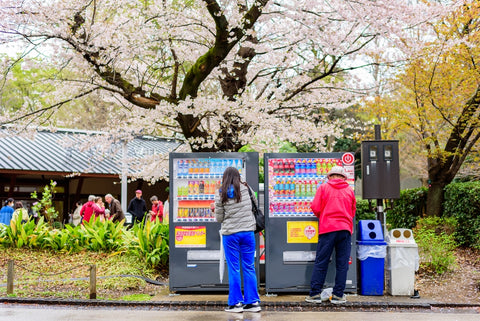
There are over 5.5 million vending machines in Japan, a country with a population of 125.7 million. From airports and malls to restaurants and temples, you can practically find them everywhere in the cities and countryside. The best part is that they’re almost always in perfect working condition.
These vending machines are special because of the wide array of products they sell. The most common ones sell non-alcoholic drinks, including juice, soft drinks, and tea. Other, less common machines dispense alcoholic drinks, cigarettes, snacks, noodles, rice, SIM cards, cameras, and even smartphones. A Japanese vending machine works the same way as those in other countries. You slot in coins or bills (in yen), select the item you want via its associated button, and wait for the machine to dispense it.
These vending machines have become an integral part of Japanese culture. They offer convenience, security, reliability, and low-cost shopping to the people. Hence, Japan continues to invest heavily in vending machines, decades after the first one was created.
A Brief History of Vending Machines in Japan

Takashichi Tawaraya invented the first vending machine in Japan in 1888. It dispensed tobacco and used simple technology. Tawaraya filed a patent for it in the same year. He later invented what is now the oldest surviving vending machine in Japan, a postage stamp and postcard vendor. Tawaraya’s machines were made of wood but were advanced enough to dispense change and show item prices. Another 1900s vending machine that still exists today dispenses sake (Japanese rice wine).
The 1920s saw confectionary vending machines slowly gain popularity in the country. In the late 1950s, vending machines became widespread. Beverage vending machines began leading the pack after an American beverage manufacturer entered the Japanese market in 1962 with the “Fountain-style Juice Dispenser.” It didn’t take long for alcoholic beverage manufacturers to see the potential and enter into the vending machine business as well. Hence, from 1964 to 1970, the number of vending machines in Japan grew from 240,000 to 1 million. The number grew past 2 million in 1973 and 5 million in 1984. By 2000, it had surpassed 5.6 million.
Although improvements in digital technology and online shopping have slowed down the rapid growth of vending machines in the country, they’re still popular. However, the latest versions have advanced technology. They may come with internal sensors, refrigerators, and heaters. It all depends on the type of items they dispense.
Exploring the Variety: Japan's Vending Machine Offerings
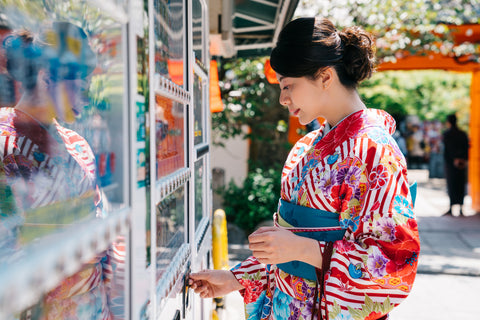
There is a diverse range of products available in Japanese vending machines, ranging from the mundane to the unexpected. We’ll cover a few of the most common offerings below.
-
Food and Drinks: Some of these machines dispense a variety of edible products. They include hot meals, instant noodles, ice cream, fast food, popcorn, bento boxes, milk, fruits, tea, soft drinks, and coffee vending machines.
-
Electronics: You can also buy cameras, phones, SIM cards, batteries, headphones, chargers, memory cards, cables, and more.
-
Clothing: A few of them dispense goods ranging from disposable products like face masks and diapers to more conventional clothing items like t-shirts and underwear.
-
Alcohol and Cigarettes: Although getting alcoholic drinks and cigarettes from vending machines requires an extra layer of verification, many dispense sake, beer, and tobacco.
Hot Food at Your Fingertips: Japan's Hot Food Vending Machines
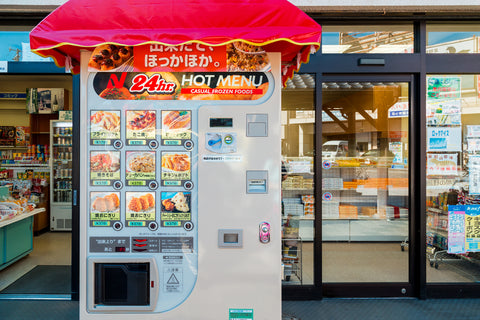
Hot vending machines are modern versions of the device that allow you to select and buy hot food in less than a minute. Japan has a lot of these types of vending machines. After you choose a meal, the machine heats the food to a regulatory temperature that makes the stored food safe to eat (typically 60°C). It then dispenses the hot food for you to collect and enjoy. These types of vending machines are ideal for dispensing fast foods such as burgers, ramen, chips, pizza, and toast. However, some of them dispense cooked meals like stir fry, lasagne, curry, roast, and hot pot. Hot food vending machines provide quick access to meals for people who are busy. With a few easy steps, you can have some of your favorite meals in seconds.
Quenching Thirst: The Wide Array of Vending Machine Drinks
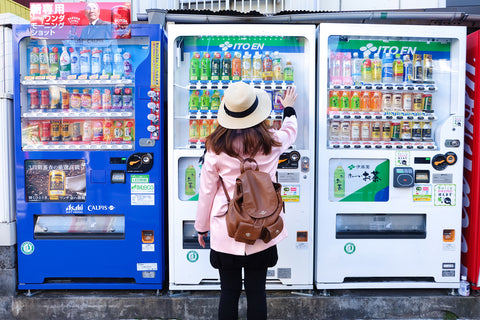
Since the 1960s, beverage-dispensing vending machines have been among the most popular variants. These days, they can house hot drinks, cold beverages, or both. The majority of the devices use energy-saving thermosystems to raise or reduce the temperature of drinks on demand. Everything happens at the same vending machine!
Some of the common hot or cold drinks in stock are sodas, teas, coffees, juice, and even soup. Each of them can be sold at different temperatures. For instance, the same machine might sell cans of hot and cold coffee, with the universal blue and red tags serving as a differentiator. Since the temperature in Japan heavily fluctuates throughout the year, there is always high demand for hybrid drink vending machines.
The Allure of Vending Machine Restaurants
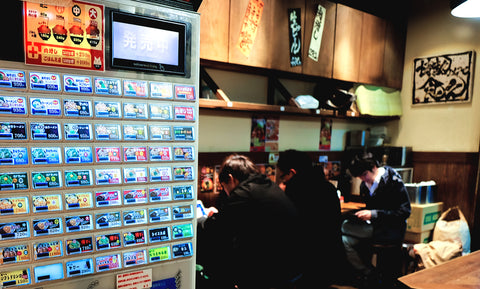
Japanese restaurants use vending machines in two ways. The first is a regular food dispenser that sells hot or cold meals and snacks. The second is a no-staff vending machine restaurant that allows customers to enjoy a meal with minimal human interaction.
Here’s how it works. In some cases, you have to place an order and make payment through the vending machine, which dispenses the appropriate ticket. You pass the ticket to someone at the counter, who hands you your food. In other cases, the cook stocks the vending machine with a variety of meals. You choose a meal from the machine and pay for it. Next, the machine heats or cools the food before dispensing it. These vending machine restaurants typically only employ cleaners to help maintain the eating area. No matter what type of vending machine restaurant you eat at, you never have to worry about someone cooking your meal after touching the money you handed them.
From Snacks to Gadgets: The Range of Vending Machine Stores
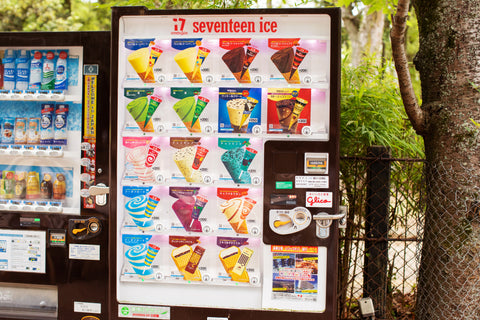
Today’s vending machines now serve as mini-marts where people can buy a wide range of products. These unmanned yet convenient stores sell snacks, candy, high-end gadgets, toiletries, and even groceries. Some of the machines can stock up to 300 different items. Plus, you don’t have to walk around long aisles to find the products you need when you can simply press a button and voila! Your item pops out.
For vending machine stores in Japan to be viable business ventures, owners tend to place them in strategic locations like campuses, camp sites, bus stations, and train stations. People in those places would benefit from the 24/7 availability of the same essential items sold at traditional convenience stores that close after dark.
The Unique Charm of Interesting Vending Machines

If you thought you'd seen it all when it comes to vending machines and the items they spurt out, think again. There are still some interesting and unusual vending machines out there. One of the most common of them is the cigarette vending machine, which may raise eyebrows for people living abroad. However, they’re a regular sight and 100% legal in Japan. Minors are prevented from buying cigarettes by a strict age verification process. Before you can buy a pack, you have to submit an ID card or TASCO card. The latter is a card that the Tobacco Industry of Japan issues to verify that the holder is of legal smoking age.
The egg vending machine, which offers fresh eggs recently stocked by nearby farmers, is another unusual variation. Then there’s the umbrella vending machine, a device that has saved countless people from the unforgiving rainfall and unrelenting sun. Being the home of ramen, one would expect Japan to have lots of ramen-dedicated vending machines, and it does. With only a small amount of money, you can enjoy the tasty noodles on the go. Other unusual versions are surgical masks, dashi broth, condoms, and a homemade burger vending machine.
Satisfying Cravings: Vending Machine Food in Japan
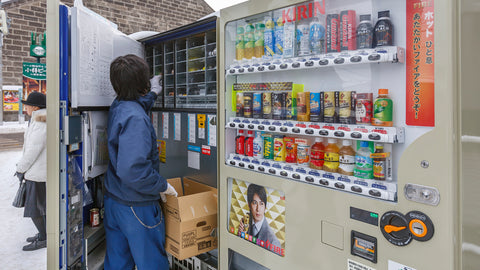
There is a notion flying around that vending machine food quality is poor. These ideas couldn’t be more wrong. Operators take strict measures to ensure that the food they sell is of high quality. Below is a list of some of these measures:
-
They follow strict stocking and restocking schedules, particularly when dealing with fresh foods.
-
All of the foods in stock are sealed in special containers that are designed to preserve freshness and taste.
-
They conduct routine safety, quality assurance, and compliance checks on the vending machines and the items inside of them.
-
They pick foods and snacks with a long shelf life and high resistance to spoilage.
-
They use machines with modern heating and cooling technology
The Convenience of Alcohol Vending Machines

Alcohol is another age-restricted item you can find in Japan, particularly in big cities like Tokyo and Osaka. To help regulate the alcoholic drinks in these machines, the Japanese government has prompted all owners to attach an indicator to their machine stating that drinking under the age of 20 and drunk driving are serious offenses. Also, the government prohibits the sale of the drinks after 11:00 PM and 5:00 PM. Alcohol vending machines in Japan offer everything from beer to sake for adult consumers. Common products include local and foreign beer brands, traditional sake, and chuhai.
Technological Innovations: The Future of Vending Machines in Japan

Vending machines in Japan have come a long way since 1888. The latest versions are much more sophisticated and efficient. Many of them use touch screens instead of buttons, allowing customers to personalize their orders more conveniently. The introduction of facial recognition technology also proved to be useful, particularly with the age verification process required by cigarette and alcohol vending machines.
Perhaps the biggest game changer has been the introduction of cashless digital payment, which allows you to buy items from the vending machine without slotting in a coin or bill. These machines accept credit cards, mobile wallets, and debit cards. Besides making payments easier for consumers, they also reduce the risk of robbery and vandalism of the machines that use them since there's no physical cash involved.
Although still under development, AI-powered vending machines already exist in Japan. They optimize operations such as restocking and inventory management. They also offer customers a more personalized shopping experience by recommending products to buy based on their past purchases.
Cultural Significance: Why Vending Machines Thrive in Japan

Both consumers and business owners in Japan love vending machines, a clear sign that it benefits all of the parties involved. For consumers, the machine offers convenience and 24/7 product availability. It’s basically a mini convenience store with faster response times and closer proximity.
And for businesses, it helps them save money by reducing labor costs. A vending machine corner does not take up much space, so one can assume this helps reduce the cost of additional real estate, which is a big deal in a mountainous country like Japan where the cost of real estate can be steep. Japanese vending machines hardly suffer vandalism, unlike in other countries. Hence, business owners can rest easy knowing their investment is secure.
Eco-Friendly Trends: Sustainable Practices in Vending
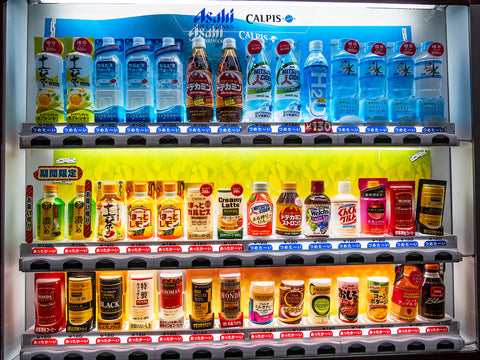
Considering how many vending machines there are in the country, a major concern has been how they would affect the environment. Thankfully, there have been considerable efforts towards sustainability in Japan's vending machine industry. Newer models are designed to be energy-efficient. They also come with their own recycling systems, which help to better manage waste. There are models with a separate compartment for recyclable waste, thereby encouraging users to dispose of their waste properly.
New initiatives are seeing vending machines in Japan house products with sustainable or biodegradable packaging. Makers of these machines seem to recognize that true sustainability is a joint effort and are taking steps to achieve it.
Experiencing Japan's Vending Machines: Tips for Tourists
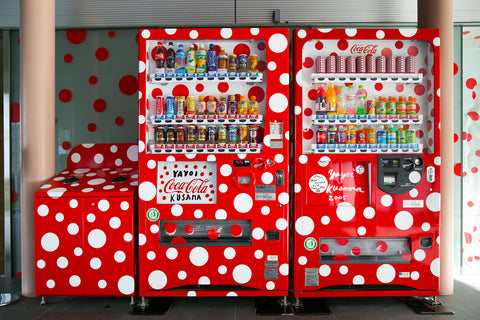
If you’re a tourist in Japan, there’s a chance that you'll encounter some issues using the unique vending machines. To help you avoid these problems, here are some tips:
-
The first thing you do is insert your payment.
-
Most vending machines tend to accept 10-yen, 50-yen, 100-yen, and 500-yen coins. They also accept 1,000-yen bills. They do not accept 1-yen or 5-yen coins.
-
You can find advanced versions, like the touch-screen vending machine, at train stations.
-
Hot drinks are mostly available during the fall and winter seasons. Be careful when handling them.
-
You might need a means to translate machines not labeled in English
-
If you paid cash, don’t forget to collect your change after receiving your item.
-
Flashing red buttons or displays is a sign that your order is not in stock.
The Last Coin: Summing Up Japan's Vending Machine Phenomenon

The fact that manufacturers are spending time and resources to make more innovative versions of vending machines bodes well for the future. In a world where contactless transactions are becoming more important, Japanese vending machines are here to stay!
You don’t need to leave the house or travel down to Japan to enjoy some of the treats dispensed by these vending machines. Get authentic Japanese sweets delivered to your doorstep each month with a Bokksu Snack Box Subscription. We’ve got you covered with snacks and tea for every season!


























